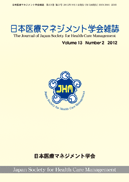Volume 17, Issue 1
Displaying 1-7 of 7 articles from this issue
- |<
- <
- 1
- >
- >|
Review Article
-
Article type: Review Article
2016Volume 17Issue 1 Pages 2-7
Published: June 01, 2016
Released on J-STAGE: December 28, 2021
Download PDF (746K)
Original Articles
-
Article type: Original Articles
2016Volume 17Issue 1 Pages 8-13
Published: June 01, 2016
Released on J-STAGE: December 28, 2021
Download PDF (673K) -
Article type: Original Articles
2016Volume 17Issue 1 Pages 14-21
Published: June 01, 2016
Released on J-STAGE: December 28, 2021
Download PDF (836K)
Case Reports
-
Article type: Case Reports
2016Volume 17Issue 1 Pages 22-27
Published: June 01, 2016
Released on J-STAGE: December 28, 2021
Download PDF (993K) -
Article type: Case Reports
2016Volume 17Issue 1 Pages 28-32
Published: June 01, 2016
Released on J-STAGE: December 28, 2021
Download PDF (1224K) -
Article type: Case Reports
2016Volume 17Issue 1 Pages 33-36
Published: June 01, 2016
Released on J-STAGE: December 28, 2021
Download PDF (570K) -
Article type: Case Reports
2016Volume 17Issue 1 Pages 37-39
Published: June 01, 2016
Released on J-STAGE: December 28, 2021
Download PDF (766K)
- |<
- <
- 1
- >
- >|
